
 First published in the United States of America in 2018 by Chronicle Books LLC.
First published in the United States of America in 2018 by Chronicle Books LLC.
Originally published in France in 2016 under the title Terrariums: Les Mondes Vgtaux Sous Verre by Marabout. Copyright 2016 Hachette Livre (Marabout).
All rights reserved. No part of this book may be reproduced in any form without written permission from the publisher. ISBN 978-1-4521-7021-3 (epub, mobi) Library of Congress Cataloging-in-Publication Data available.
ISBN 978-1-4521-7009-1 (hc) Photographs by Rebecca Genet
Cover design by Vanessa Dina Chronicle books and gifts are available at special quantity discounts to corporations, professional associations, literacy programs, and other organizations. For details and discount information, please contact our corporate/premiums department at or at 1-800-759-0190. Chronicle Books LLC
680 Second Street
San Francisco, California 94107
www.chroniclebooks.com
CONTENTS


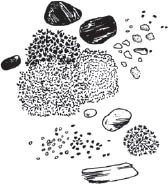
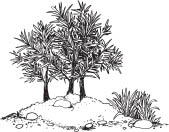
INTRODUCTION
...
Yon lindens for a seat I crave. The few trees not mine own they spoil me The lordship of the world I have. Goethe, Faust, Part II Two hundred years ago, Goethe expressed the irrepressible longing to keep a piece of nature at home. The sweet scent of the coastal scrublands at the end of a summer day or as the rain subsides; the unceasing singing of birds and insects in the mountains in spring; the delicacy of a cushion of moss or the texture of ancient bark: so many things remind us that nature has spoken to all of our senses for millennia. Yet our cities were established by pushing nature to the periphery; since their creation, we have never stopped wanting to tame nature and reintegrate it where we livewith more or less success. From this same desire and compelled by the same obsession as Fausts, we have brought the attempt to reintegrate green spaces to a new level: our apartments.
As children of the city, we have tried to create landscapes that recall that lost lovenaturewith the idea of growing plants inside often inert interiors. These simple designs, thrifty with time and water, have the advantage of being adapted to life in the city in needing very little care. In this book, we describe the natural processes that govern these miniature worlds, and we offer many recipes to make your own terrarium, along with a selection of suitable plants.

CHAPTER 1
THE ESSENTIALS

A first encounter with a terrarium often evokes the same feelings in viewers. For many, it is a way to absorb a distillation of nature from a sprig of greenery. We love to watch this little garden under glass, to see its plants grow and bloom.
These miniature worlds function quite simply, on the same basic principles that govern life on Earth. With a few fundamentals of botany, you will understand, create, and sustain your terrarium. 
WHAT IS A TERRARIUM?
A LITTLE ECOSYSTEM
A terrarium is composed of elements from the plant and mineral worlds, and microorganisms. We bring these together in a glass container to re-create a landscape. The container that shelters them becomes the place where they play their biological roles; they interact and thrive, players in a real ecosystem. A group of living beings in a biological environment is indeed an ecosystem.
A closed terrarium creates an environment resembling that of a tropical rain forest in the guise of an artificial micro-ecosystem, with an almost self-sufficient cycle. The transparent, enclosing nature of the glassin the case of closed terrariumsallows this self-sufficiency. The transparent glass lets in the light essential to the life of plants, and the condition of being sealed keeps the humidity emitted by the plants in the jar so that there is nearly no need to add water. As long as this landscape under glass receives a good initial dose of all the necessary elements to thrive (water, light, nutrients), it can live in near-autonomy for a long time. Human intervention can be minimal or unnecessary. A different technique from the closed design is the open terrarium, which also assembles plants to create a small landscape, but in a container without a cover.
This design method does not engage the same biological process: since it does not maintain its humidity level, the terrarium is not a self-sustaining ecosystem. In keeping with the idea of natural designs without many needs, we choose plants from arid environments for this type of landscape. Cacti and succulents allow for easy care since they consume very little water.
NATURE IN MINIATURE
We make a terrarium the way a landscape gardener designs a garden, but in miniature. The art of the composition balances aesthetic and biological interesttrue to the reality of nature.
Biology of the Terrarium
The choice of associations between living and mineral elements can lead to a beneficial symbiosisor to a failure that will make you think you dont have a green thumb.
Consider first the requirements of the plants in their natural environment before assembling the terrarium. The combination of plants according to their habitat needsmoisture, light, soil typeis accomplished by mingling plants that will not compete with each other at the level of their branches or their roots. If, for example, we dont combine forest mosses with cacti in the same design, its because they dont have the same moisture requirements. The moss needs ample moisture to stay green, an amount that would spoil a cactus. 
Aesthetics of the Design
Many of our terrariums are created according to our classic style: a central miniature tree that enhances the effect of a landscape in a jar and gives it its scale, with a few companion plants or mineral embellishments that recall the diversity at the foot of this tree in its natural environment. A rain forest tree, for example, such as a ficus, has beside it a luxuriant and colorful tropical plant such as a fittonia.
Aralia, which loves acidic soils, goes well with ferns, which have the same needs in terms of soil type. Mosses are an important component of high-moisture designs; they may grow in flat mats (sheet moss) and evoke a tiny meadow, or some mosses grow in mounds (cushion moss) and create the impression of a verdant hill. Small stones become boulders; small dead branches or twigs are transformed into miniature mossy logs.


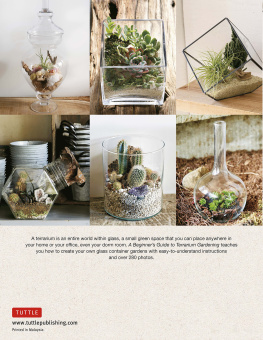
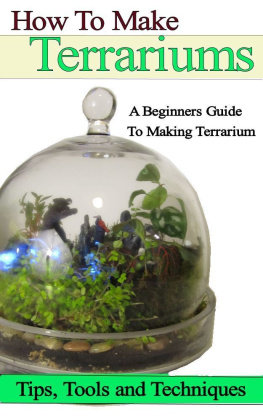
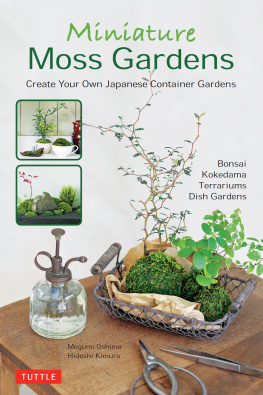

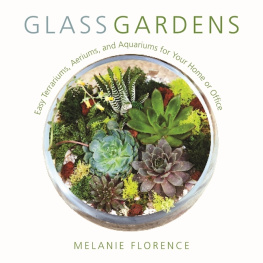
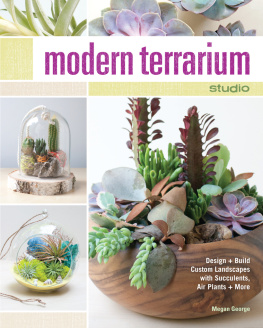
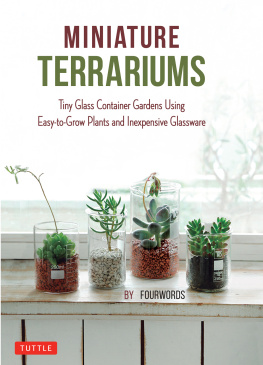
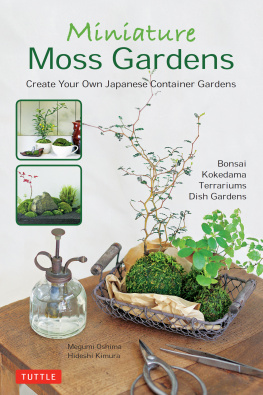


 First published in the United States of America in 2018 by Chronicle Books LLC.
First published in the United States of America in 2018 by Chronicle Books LLC.




 A first encounter with a terrarium often evokes the same feelings in viewers. For many, it is a way to absorb a distillation of nature from a sprig of greenery. We love to watch this little garden under glass, to see its plants grow and bloom.
A first encounter with a terrarium often evokes the same feelings in viewers. For many, it is a way to absorb a distillation of nature from a sprig of greenery. We love to watch this little garden under glass, to see its plants grow and bloom. 
